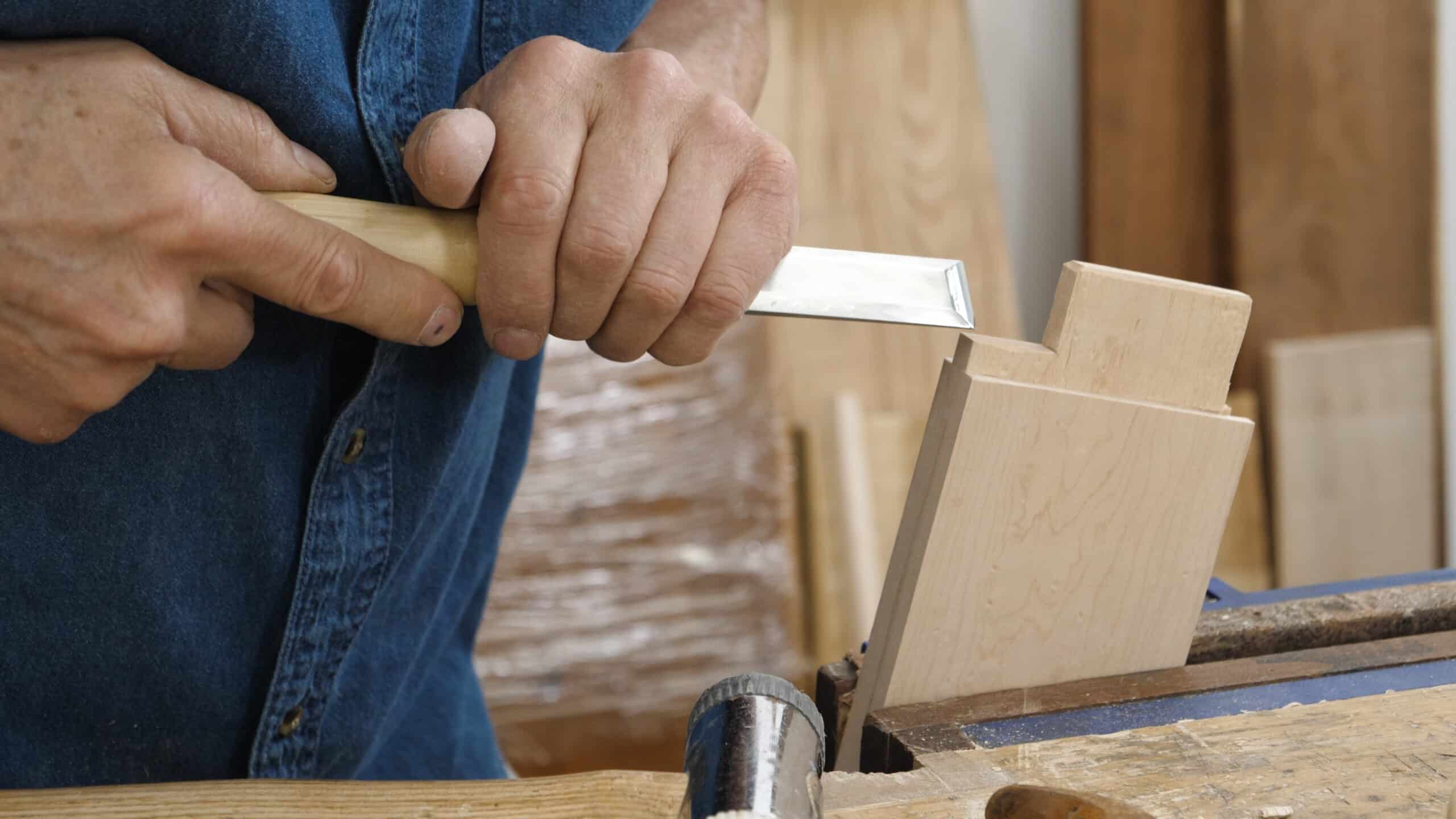Blanket Chest: Episode 8
Posted 16 May 2018
This is an episode in a paid series. Want to watch it? You just need to sign up as a paid member, and you can enjoy this video and many other videos we think you will love.
Paul lays out the lid and cuts the grooves, mortises and tenon in the same way as for the carcass, with the addition of using a mortise guide. Once complete with the panel fitted, it can be glued up. Then there is a little cleanup, the haunches are removed and the lid is shaped and ready for hinging.


I like that the whole lid was covered in a single episode – it’s good to have one video to refer to that covers a sub-assembly.
I understand the use of pencil lines as the initial layout, to “get in the ball park” as I’ve heard a wise man say many times, but my question is regarding how you’re placing the knife on it after. It looked like in this video you simply placed the knife on the pencil line. Did you aim for the center, or edge of the pencil line? At the risk of being way way too picky probably, is it possible this could allow for some discrepancy later on when the use of the knife is to be precise? Meaning, could you place the knife on the wrong side of the pencil line and create a gap down the road? The width of one pencil line might not matter but going on the outside of both pencil lines might increase a shoulder line some noticeable amount?
There could be some minor discrepancy that would end up in the overhang, nothing to worry about there. The important part to note is that the second piece is marked off the first so that the shoulders are identical. For me it’s become a time economy in the layout when the design will allow it.
Could you comment on how you go about deciding what length the tenon should be? I think many of us may have heard or read rules of thumb like the tenon length should be five times its thickness.
Hello Harry. Paul doesn’t really go by rules of thumb for this. A lot of it comes from experience and gut feeling, which is of course hard to pass on, but below are the though process he went through:
For the legs, it was governed by the need for strength in the leg itself. Paul took the positioning of the mortise by the centre groove in the rail being 1/4″ in from the front face. Then he wanted enough wood on the inside of the leg so that everything was enclosed by a decent mass of wood. This then determined the mortise length. They meet and have the mitred end to maximise length.
For the lid, Paul wanted sufficient material and surface are going into the mortise to control any possible movement of the long rails. Though the tenons could have gone longer, there really was no value to it.
I hope that has some value for you.
Thanks Phil, I appreciate that. The legs made perfect sense to me. Once the mortises join, you’re done, and 1/4″ is about the minimum material I would be comfortable with on the outside of the mortise. But I’ve always wondered about the tenon length for panel construction because the rails can vary so much in width depending on the design. I guess if you’re going to make really loose tenons, longer ones might be helpful, but if they fit properly I never understood why a 3/8″ tenon would need to be 1 7/8″ long. I know after mine for this project go in the mortise 1/2″ or so, those things aren’t going to move in any direction except straight down in the hole. Great project by the way. I highly recommend this one.
When you check for winding, do you check the top of the chest to see if there is winding amongst the tops of the legs and rails?
What is the reason for a haunch on the tennon?
It’s just a haunch.!!
The Haunch is to fill in the groove on the rails.
Besides filling the groove in the mating piece it also prevent the mating pieces from getting out of alignment from stress or warping.
I fully agree. With changes in humidity sometimes the wood wants to cup. The haunch helps to resist cupping.